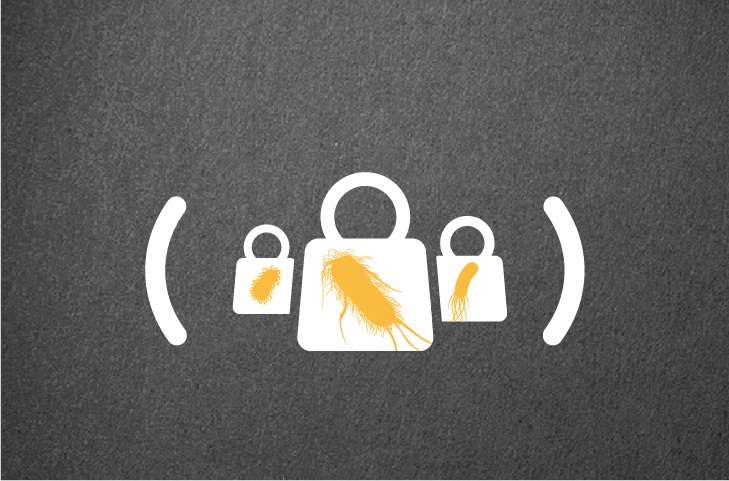MBL patient profiles
The impact of delayed, inappropriate treatment of MBL-producing bacteria1–4
Timely, appropriate treatment, based on local epidemiology and risk factors for metallo-β-lactamases (MBL)-producing pathogens is vital to improve patient and healthcare-associated outcomes.1–5
In the video below, hear from ID specialist, Dr Beatrice Grabein, as she discusses the consequences of delayed, inappropriate therapy and learn about the risk factors associated with infections caused by MBL-producing Enterobacterales.

Infectious Disease specialist, Dr Beatrice Grabein: Reasons why you should be aware of MBLs
To help you identify these patients earlier, some of the key patient risk factors associated with infections caused by MBL-producing Enterobacterales are highlighted below.
Patient risk factors for infections caused by MBL-producing Enterobacterales are largely the same as risk factors for infections caused by other carbapenemase-producing Enterobacterales and include:6–8




Important predictors of MBL infections:


ID specialist, Dr Beatrice Grabein: How to manage infections caused by MBL-producing Enterobacterales
Infections due to (MBL)-producing pathogens:
Appropriate therapy for patients with infections caused by MBL-producing bacteria relies on the detection of β-lactamases involved.1 Several molecular and biochemical rapid diagnostic tests (RDTs) can identify clinically relevant MBLs and other important serine-β-lactamases (SBLs).1,2
Methods of detection of carbapenemases1
| Phenotypic methods for detection of carbapenemase activity (all carbapenemases, including KPC, OXA-48, IMP and VIM): | Specific methods for detection of MBLs: |
| The modified carbapenem/carbapenem inactivation method (mCIM/CIM) | Disc/strip-based inhibition methods |
| MALDI-TOF MS | MBL-targeted mCIM |
| Lateral flow immunoassay on isolates | Modified MALDI-TOF MS |
Created from Wu W, et al. Clin Microbiol Rev 2019;32(2):e00115-18.1
Abbreviations
IMP, imipenemase-type metallo-β-lactamase; KPC, Klebsiella pneumoniae carbapenemase; MALDI-TOF MS, Matrix-assisted laser desorption/ionisation-time of flight mass spectrometry; MBL, metallo-beta lactamase; mCIM, modified carbapenem inactivation method; OXA, oxacillinase; RDT, rapid diagnostic test; SBL, serine-beta-lactamase; VIM, Verona integron-encoded metallo-β-lactamase.
References
- Wu W, et al. Clin Microbiol Rev 2019;32(2):e00115-18.
- Tan X, et al. Infect Drug Resist 2021;14:125–42.
MBLs are an alarming and urgent problem. But one that is possibe to tackle. Together.

Epidemiology
Using surveillance data, we can understand whether MBLs pose a threat to your patients5,9
Explore MBL epidemiology and learn about the incidence and prevalence of carbapenemases in your region.

The Burden
Infections caused by MBL-producing Enterobacterales cause higher mortality rates compared to non-carbapenemase producing CRE7,10
Explore in detail the burden of MBL-producing Enterobacterales on patient outcomes.
- Zavascki AP, et al. J Antimicrob Chemother 2006;58:387–92.
- Willmann M et al. BMC Infect Dis 2013;13:515.
- Papadimitriou-Olivgeris M, et al. Eur J Clin Microbiol Infect Dis 2017;36:1125–31.
- Daikos GL, et al. Antimicrob Agents Chemother 2009;53:1868–73.
- Kelly AM, et al. Int J Antimicrob Agents 2017;50:127–34.
- Daikos GL, et al. J Antimicrob Chemother 2010;65:784–8.
- de Jager P, et al. PLoS One 2015;10:e0123337.
- Van Duin D, et al. Virulence 2017;8:460–9.
- Bakthavatchalam YD et al .In vitro activity of ceftazidime-avibactam and its comparators against carbapenem resistant Enterobacterales collected across India: results from ATLAS surveillance 2018 to 2019. Microbiol Infect Dis. 2022;103:115652.
- Tamma PD, et al. Clin Infect Dis 2017;64:257–64.